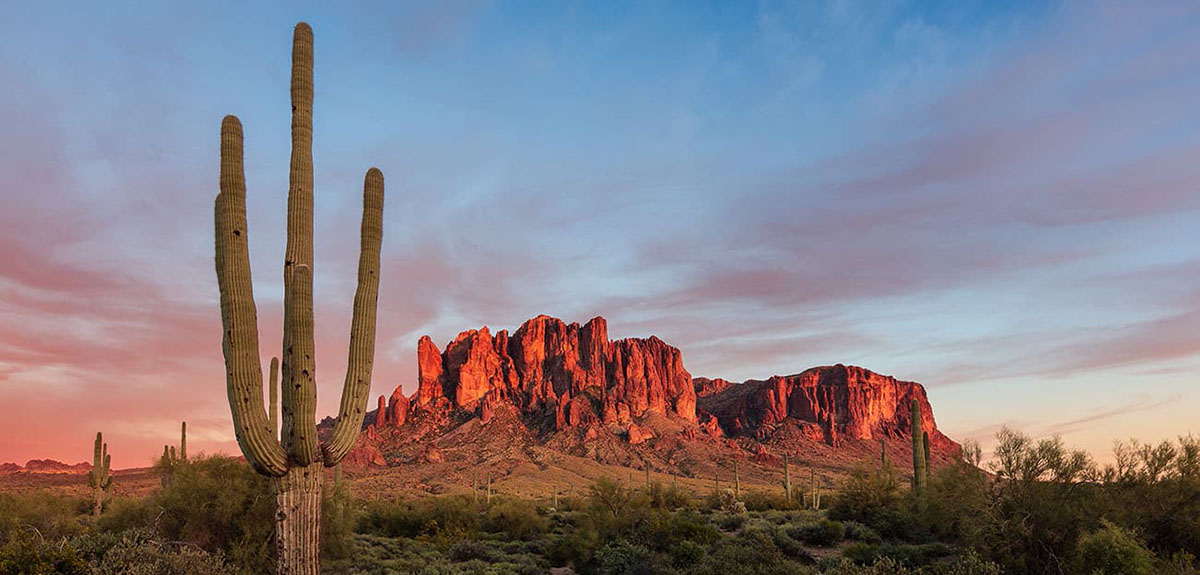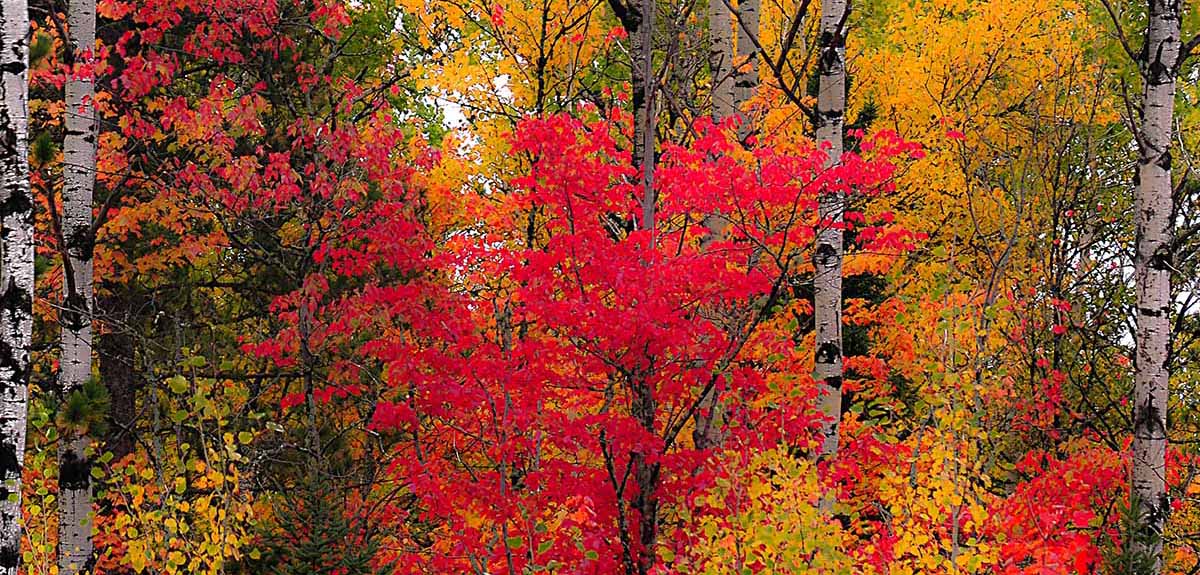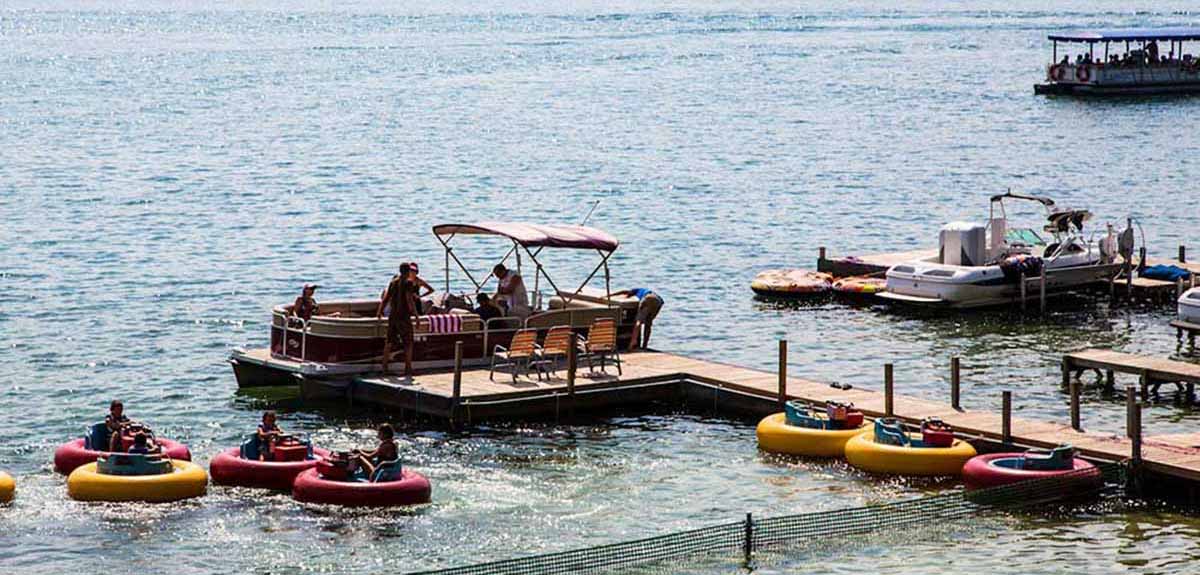RVing in Daytona Beach
Image Caption:
On a quintessential sunny Florida day, my husband and I slowly wound our motorhome down Atlantic Avenue in the heart of Daytona Beach. We were immediately confronted by all the diversions that make this destination renowned. The city’s nickname has long been the “World’s Most Famous Beach.” The name is an appropriate moniker given the area’s international reputation.
Daytona Beach is most famously a mecca of motorsports and motorcycles, and of beach driving and bikinis. Lining the streets, we saw surf shops, trinket emporiums and party bars. The popular amusement-filled boardwalk was brimming with happy, sunburned tourists. Racing- and motorcycle-themed souvenirs hung in shop windows next to colorful beach towels and tiny string bikinis. There was the unique sight of cars leisurely driving on the hard-packed, white-sand beach, and the less unique sight of teenagers happily munching from paper plates loaded down with funnel cakes and french fries.
Everyone seemed to be having a great time enjoying all of Daytona’s signature offerings, but I was in the mood for something a little different. I decided to look past all the flashy and in-your-face fun to see what else Daytona might have to offer. I discovered that if you will peer curiously beyond the condos, wander with abandon up and down the residential streets, and even venture boldly down to where the Atlantic Ocean meets the Halifax River, you will find another side of Daytona. This alternative view of the famous beach town showcases the natural wonders of the area, takes you into maritime history and even recalls the fascinating lives of those who arrived first.

The Museum of Arts & Sciences features exhibits from Daytona’s history, including the original Coca-Cola glass bottle design and other memorabilia of the fizzy drink. Photos: A.M. Murphy
Daytona Beach History
When businessman Mathias Day purchased thousands of acres of wild and abandoned lands on the eastern coast of Florida, his dreams of establishing a new community would have seemed to many onlookers to be both fanciful and bold. The year was 1871 and Day, an Ohio native and purveyor of farm machinery, saw an opportunity to create a settlement on the Florida coast near the Halifax River.
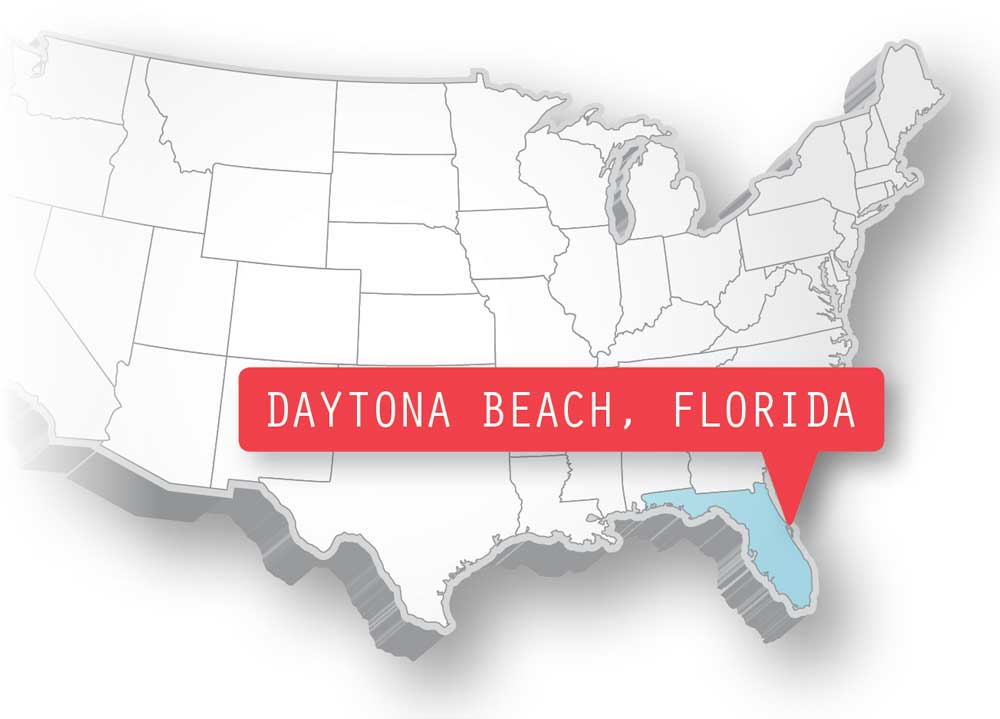
Did You Know? Daytona Beach is located on the eastern shoreline of Florida where the Atlantic Ocean and the Halifax River meet. Prior to the late 1800s the area was a wild and empty land traversed only occasionally by Seminole Indians and claimed by the Spanish Crown.
Prior to formal European settlement, the area now known as Daytona Beach had been traversed by various groups of Native Americans, with no group in particular settling the area. Eventually the terrain was mapped by both Spanish and French explorers studying the whole of Florida. It was Spain that most frequently laid claim to the lands as part of the Spanish Crown’s vast holdings in the region.
The Spanish eventually granted the land to Samuel Williams, who built a working plantation on the Halifax River. In the early 1800s, Williams’ plantation produced bountiful amounts of sugar, rice and cotton. He also established large groves of citrus trees. In the mid-1800s the Seminole Indians, wanting to drive out the land owners and protest Indian removal efforts, burned down the plantation and subsequently the area laid neglected and decaying for a number of years. On occasion, a lumber company would temporarily establish itself in the area to harvest some of the large native live-oak trees for use in shipbuilding.
Where others saw empty and abandoned acres, Day saw opportunity. For less than $10,000, Day purchased the thousands of acres that were primarily lands of the defunct Williams plantation. Over the next few years the intrepid entrepreneur, along with a cousin and a dozen or so skilled workers, built close to 20 individual homes. They also constructed a general store, post office and a hotel called the Palmetto House. Whether it was the heat, the giant mosquitos, or the lack of modern amenities, few pioneers came to the area to share Day’s dream. The slow settlement rate was more than Day could bankroll, and he eventually returned to Ohio.
A handful of the original pioneers who had settled in the Day-built homes stayed on and continued to maintain the fledgling settlement. The community was little more than a wilderness outpost. The area was wild terrain filled with swamps, thick stands of weeds and no easy access to other settlement areas. Despite the harsh conditions, the settlers persisted. Finally, on a sweltering afternoon in June 1876, the men of the settlement gathered to vote on an official incorporation of the town. After much discussion they ultimately chose to honor the original settler, Mathias Day, with their selection of the name Daytona Beach for the nascent town.
Daytona Beach Development
Over time the primitive sandy paths lined with live-oak trees and palmettos slowly gave way to more durable streets, modern homes and storefronts. Finally, in the modern era, the area settled into its signature blend of unruly spring break teenagers, crowds of cheering race fans, high-rise condos and the roar of biker rallies. Eventually all these rowdy diversions took a toll on the city and it gained a reputation as being a bit shabby and struggling; a place fit only for a crowd in search of the raucous and rollicking. Now the famed city is once again in a period of renaissance where landmarks are being restored, neighborhoods rehabilitated and appreciation of the past cultivated. It was this historic and natural side of Daytona that I desired to step off the beaten path and explore.
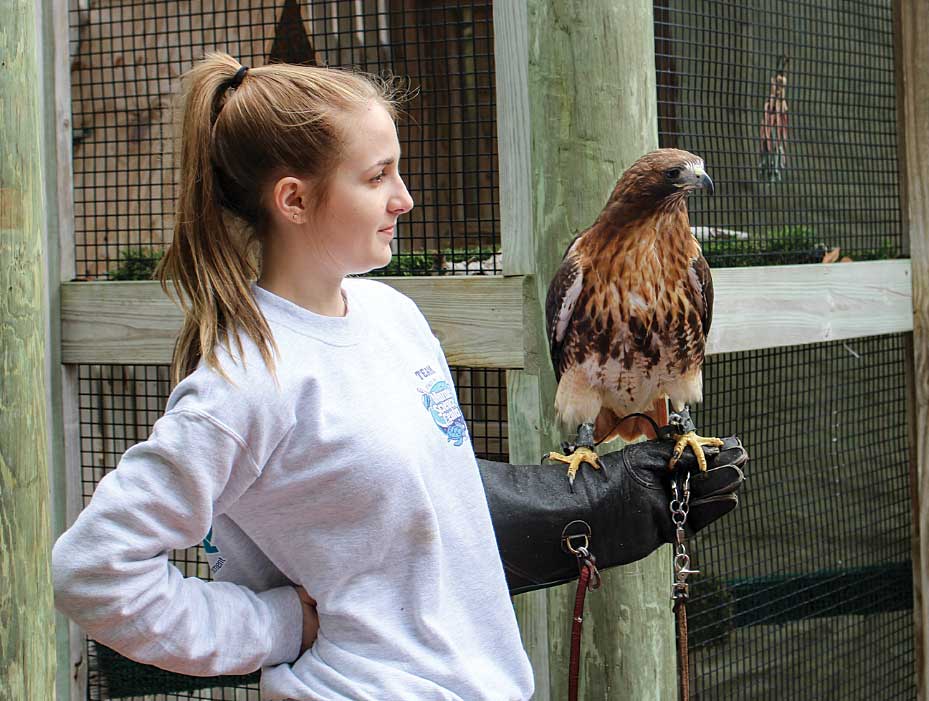
The Seabird Sanctuary treats and releases thousands of injured birds each year while a handful, like this proud fellow, become resident ambassadors.
Daytona Beach Museums
Our first stop was the Museum of Arts & Sciences. The “MOAS,” as it is locally referred to, is a campus of art, science and natural history exhibits. The main museum building contains a number of wings and galleries dedicated to American, Cuban, Chinese and African art, as well as large collections of antique furniture and decorative arts. A unique assortment of historic weaponry dominates one wing and includes Napoleonic swords, examples of armor and some intricately crafted firearms. The museum galleries also provide space to feature a number of visiting or rotating exhibits. An overview of current displays can be pre-viewed on the MOAS website. One rotating exhibit that I especially enjoyed during our visit was a display of vintage Florida postcards.
In one distinct area of the MOAS, we located the fascinating Root Family Museum. The Root Glass Co. created the original design of the classic glass Coca-Cola bottle in 1915. The glass company competed against others to win the right to produce their bottle design for the fledgling Coca-Cola Co. It would not be an exaggeration to say that millions of people around the world would instantly recognize this famous bottle, with its green glass and curvy ribbed design. The MOAS prestigiously possesses one (of only two in existence) of the original prototype bottles. The Coca-Cola collection also includes hundreds of other pieces of memorabilia related to the fizzy drink, including everything from historic advertising pieces to large-scale production equipment. The Root family also collected many other items of Americana, including full-size train cars, teddy bears, artifacts of American Indian heritage and relics from the Wild West period. All of the collections are permanently on display at the museum.
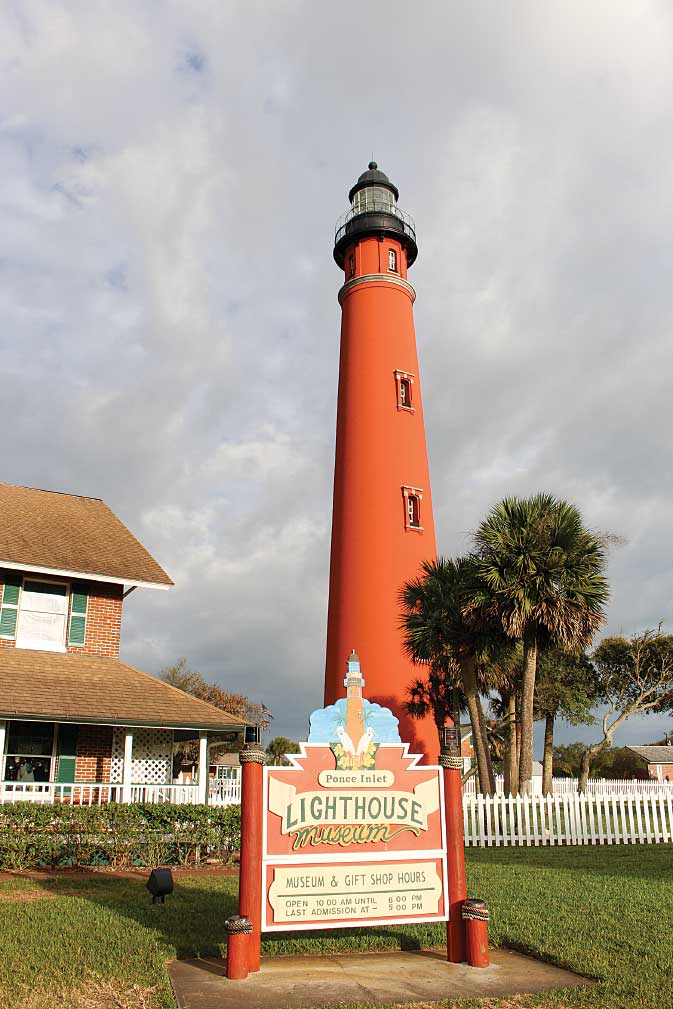
Ponce De Leon Inlet Lighthouse is the tallest in Florida. Climb 203 steps to the deck of this National Historic Landmark for sweeping views.
The MOAS has a number of other diverse offerings, like the interactive Charles and Linda Williams Children’s Museum, a full-size planetarium that offers a variety of daily virtual trips out into the universe and the 90-acre Tuscawilla Preserve. The preserve provides an opportunity to walk nature trails through indigenous gardens and plant life. A short walk or quick drive to the other end of the campus and fine art enthusiasts can visit the Cici and Hyatt Brown Museum of Art. The building houses a collection of art specific to the history and culture of Florida. The MOAS is a place you could easily adjust to any itinerary by spending just two hours or two full days visiting the campus. A variety of admission ticket options are available, and I noted that the campus had plenty of free parking that could accommodate motorhomes.
Daytona Beach Dining
After leaving the museum campus we stopped for lunch at Our Deck Down Under which, as the name suggests, is a restaurant located just under the Dunlawton Avenue Bridge. The restaurant’s outdoor deck has great water views and the seafood selections, which primarily revolve around various fried platters, are served in unpretentious and generous portions by a friendly staff.
Our next stop was the Lilian Place Heritage Center. This historic Victorian mansion is the oldest dwelling in beachside Daytona. The home is a quaint piece of the area’s history that is maintained by the Heritage Preservation Trust of Volusia County. Tucked into a quiet and unassuming neighborhood on the banks of Halifax River, I managed to drive past the home three times before catching a glimpse of its unmistakable Victorian Italianate tower. Once I found my way into the small parking area, we were warmly welcomed by a guide who gave us a brief overview of the home’s charming history and welcomed us inside for a guided tour. The home was constructed by the area’s original settlers. The building materials, including the stunning heart-of-pine floors, were brought in by boat on the river. The original owner, Lawrence Thompson, operated the local dry-goods store. The home was passed down through a number of generations before being lovingly restored by the Trust. Filled with antiques and local period artifacts, the Lilian Place provides a chance to step back into the time of the original founding of Daytona. The home also has some additional quirky history that includes visits by a friendly resident ghost, and a visit by famous author Stephen Crane (who wrote “The Red Badge of Courage”), who was literally washed ashore near Daytona and recovered at Lilian Place when his boat, the SS Commodore, sank in 1896. He later wrote about his time at Lilian Place in his acclaimed short story, “The Open Boat.”

Daytona Beach Drive-In Christian Church welcomes visitors to Sunday service on the grounds of a former drive-in movie theater.
After leaving the refinement of a Victorian mansion, my outside-the-box visit to Daytona Beach was about to take a turn to the wild side. No, I don’t mean a late-night visit to a biker bar or a trip around the track at Daytona International Speedway. We drove the short few miles down to Ponce Inlet and the Marine Science Center, where we discovered that a treasure of natural and historic experiences is available in the Inlet area.
The Marine Science Center
The Marine Science Center specializes in the rehabilitation of sea turtles and seabirds. Through the clear glass panes of the turtle hospital walls, I watched the veterinary treatment and care of injured and ailing turtles. As the turtles recover, they are released back into the ocean, healthy and ready to tackle life in the open sea once again. At the seabird sanctuary next door, thousands of injured birds of all species are brought back to full health. Those that are not able to be released into the wild become permanent resident-ambassadors of the facility. We saw numerous species of birds recovering in naturally appointed flight cages and wading pools. Guides provided us with additional information and interaction with bird ambassadors. After watching the care of the turtles and birds, we spent some time in the Marine Center’s educational exhibit gallery to learn about current and historic aspects of local marine life. Finally, we went by the Center’s touch pool. The shallow 1,400-gallon indoor pool allows visitors a chance to interact directly with some small marine life. I was able to handle, and learn about, a number of creatures, including some friendly stingrays, local fish species and cute hermit crabs.
Ponce De Leon Inlet
After leaving the Marine Center it was just a few hundred yards to the entrance of Ponce De Leon Inlet Lighthouse & Museum. The lighthouse, which was built in 1887 and is a National Historic Landmark, is the tallest in Florida. I challenged myself to climb the 203 steps to the gallery deck and was rewarded with incredible views of the ocean, the river and greater Daytona. The lighthouse tower was just the beginning of our experience. In the converted woodshed and privy building, we watched a short film that provided an overview of the history and construction of the lighthouse as well as information on its keepers.
Following the film, we explored some of the historic buildings and exhibits including the keeper’s dwelling, the oil storage building and the most enlightening: the lens exhibit building. The Ayers Davies Lens Exhibit Building houses a number of Fresnel glass prism lenses and other lighthouse artifacts. It also provides a fascinating look at the history of lighthouse illumination, from the Pharaohs of Alexandria to modern times.

Campsites at Daytona’s Endless Summer Campground, in nearby Port Orange, are well-kept and conveniently located.
Lighthouse Point Park
We could not conclude our visit to the Ponce Inlet area without a stop at Lighthouse Point Park. The park is 52 acres of preserved land that includes beaches, picnic areas, and an impressively long and scenic jetty. There was a $10 entrance fee that provided admission for the day, and the park is open sunrise to sunset. After exploring some trails and enjoying the wide, pristine beach, the park’s jetty afforded us a great opportunity to watch some determined fishermen in action.
The park and surrounding areas are very amenable to bicycle or pedestrian exploration and many areas are pooch-friendly. All that walking, exploring and climbing left us famished, so we walked quickly through the small picturesque Davies Park (named for the area’s first mayor) and over to the Hidden Treasure Rum Bar & Grill. The restaurant sits on the Halifax River and among a labyrinth of ancient oak trees. We enjoyed a dinner of fish tacos and clams in a relaxed setting with a lovely view of the water and the setting sun.
Daytona Beach Campgrounds
There are many campgrounds, RV resorts and state parks within easy driving distance of Daytona Beach. We opted to stay at Daytona’s Endless Summer Campground, a well-kept and friendly park in nearby Port Orange. After our busy days of exploring, we were tempted to skip our custom of visiting a local church on Sunday morning. I am happy we managed to rise and shine that particular Sunday to visit the Daytona Beach Drive-In Christian Church.
The church is located on the beautifully landscaped grounds of a former drive-in theater. As we pulled into the entrance, we rolled down our windows to be greeted by deacons with big smiles. The gentlemen provided us with Communion cups, service bulletins and instructions on tuning in. We pulled into a spot near the front and dialed our radio into the assigned FM station. The fellowship hall was offering donuts, coffee and the option of a seat inside the church building. We, like most other parishioners on this sunny morning, opted to simply sit back in our seats and listen to the services from the comfort of our dinghy vehicle. The non-denominational Christian church is located on South Atlantic Drive, in Daytona Shores, and heartily welcomes visitors.
This nontraditional church setting certainly provided a fitting end to our nontraditional visit to “The World’s Most Famous Beach.”
For More Information
Daytona Beach Area Convention & Visitors Bureau
386-255-0415

